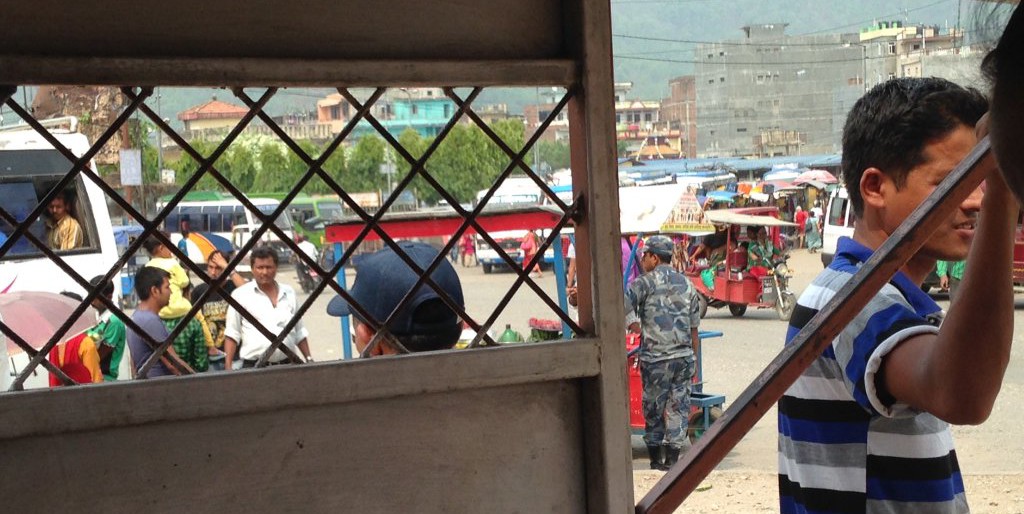Trafficking a Secondary Disaster in Nepal
In the response to any disaster or humanitarian crisis, the protection of women and children is always a priority. The chaos that comes with these events provides ample opportunity for vulnerable populations to be exploited with little to no consequences for the predators. Unlike any other disaster I have had to work on, this is […]

In the response to any disaster or humanitarian crisis, the protection of women and children is always a priority. The chaos that comes with these events provides ample opportunity for vulnerable populations to be exploited with little to no consequences for the predators. Unlike any other disaster I have had to work on, this is especially true in Nepal, where child labor and trafficking were already the cultural norm long before the April earthquake.
Human trafficking is defined by the Department of Homeland Security as a modern-day form of slavery involving the illegal trade of people for exploitation or commercial gain. Traffickers look for people who are vulnerable due to economic hardship, natural disasters or political instability and use force, fraud or coercion to lure their victims into labor or commercial sexual exploitation. In these situations, traffickers maintain control of victims in several ways: the threat of harm to the individual or their family; depriving the person of basic necessities; making false promises of a good job or home; controlling the person’s identification documents and access to money; and limiting the individual’s freedom of movement.
Consider a few statistics from a 2011 report from the International Labor Organization on children in Nepal:
- There are an estimated 7.77 million children (ages 5 to 17) in Nepal. About 40 percent of the child population is classified as working children, and of those, about 51 percent are in occupations or activities classified as hazardous.
- About nine percent of the child population in Nepal has never attended school; 59 percent have not completed primary school; and only 3.4 percent have attended secondary or higher education.
Just in case that doesn’t paint an adequate picture for you, here are a few trafficking-specific statistics:
- About 13,000 women and children from Nepal have been victims of trafficking to other countries in the last year and a half (2012 report from the National Commission for Human Rights in Nepal).
- The majority of female victims were trafficked for forced prostitution, and children are forced to beg or labor, or in some cases used for organ transplants (2014 report from UNICEF).
- Nepal is ranked 20th in the world on the Global Slavery Index (fifth out of 27 in the Asia Pacific region) due to the widespread occurrence of trafficking.
- The U.S. State Department lists Nepal as a “tier 2” country in its’ Trafficking in Persons 2014 report, which means the government does not meet the minimum standards to eliminate this injustice.
Since the April earthquake in Nepal, the most frequent question we have fielded at the Center for Disaster Philanthropy has centered on the rebuilding and relief of orphanages. Prior to the earthquake, there were an estimated 800 orphanages or children’s homes in Nepal, and about 90 percent of them failed to meet the government’s minimum operating standards, according to the Ministry of Women and Children and Social Welfare and Central Children’s Welfare Council. Poverty and political turmoil in Nepal paved the way for traffickers to prey in particular on families in rural areas, asking them to send their children to live in boarding schools in Kathmandu. The truth is that these homes are often a ruse, set up to convince donors to give money based on the false pretense that they are helping actual orphans.
As a private funder, regardless of how you chose to focus your Nepal funding, that decision should be made with an understanding of the child trafficking problem in Nepal and how it permeates all aspects of work and operation in the country. It will take careful action on the part of funders and international non-governmental organizations to ensure that efforts to help Nepal recover from this disaster do not work to further a disaster of a different kind. I recommend the following:
- Require the iNGOs and groups working in Nepal that you fund to use suppliers who adhere to highest labor employment standards.
- Recognize that using only organizations committed to the right labor employment standards may mean that projects are more costly or take slightly longer to complete. This will happen, as organizations will be limited in the number of in-country suppliers they can use and bringing in outside resources may result in heavy import taxes or levies.
- Fund organizations that have an established track record of both working in Nepal and helping and protecting children in disasters.
More like this

